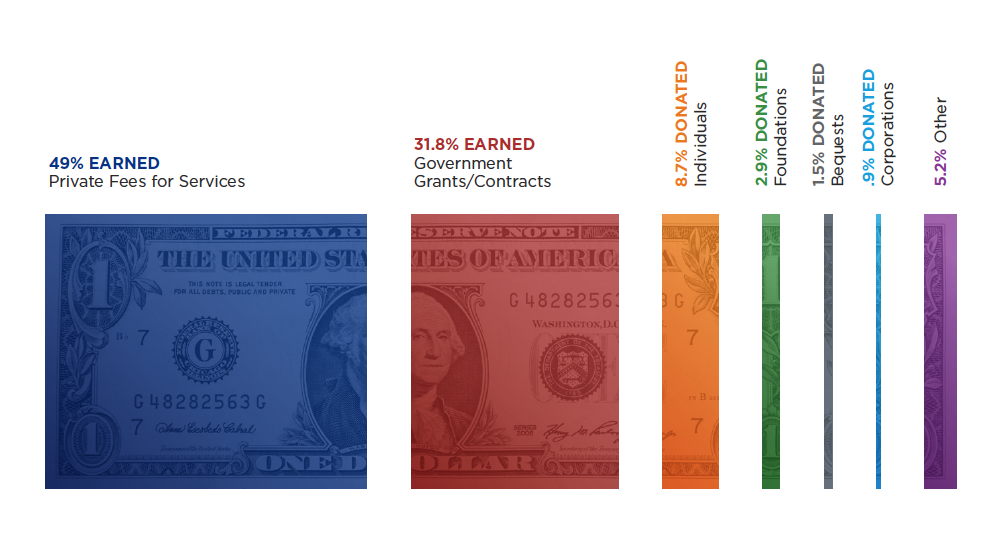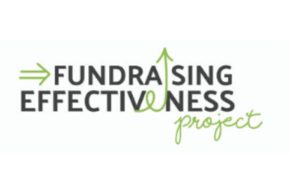The U.S. Chamber of Commerce had 158 registered lobbyists in 2016, with lobbying expenditures totaling almost $104 million. More than half a million nonprofits have been created since 2000 but fewer than 3 percent of organizations, on average, engaged in any lobbying at the local, state, or federal levels.
“Nonprofit Impact Matters: How America’s Charitable Nonprofits Strengthen Communities and Improve Lives,” a new report released yesterday by the National Council of Nonprofits, analyzed overall data about the sector to paint the latest picture of nonprofits in the United States.
There are 1.425 million nonprofits in the United States, according to Internal Revenue Service (IRS) data for 2016, released in 2018, including almost 1.3 million charitable nonprofits and 126,676 private foundations. The number of nonprofits has increased by almost 75 percent between 2000 and 2016.
More than 12 million people are employed by nonprofits — more than 10 percent of the total private workforce in the U.S. — with payrolls exceeding construction, transportation and finance. Nonprofits spend nearly $2 trillion annually, including $826 billion on salaries, benefits and payroll taxes.
Did you know that 92% of nonprofits have annual budgets of less than $1 million? That’s a lot of small and mid-sized organizations making a difference in communities. Find out more #NonprofitImpact facts at https://t.co/PD23B0RfwA pic.twitter.com/fO34Uojje8
— National Council of Nonprofits (@NatlCouncilNPs) September 18, 2019
The vast majority of the nonprofit sector is comprised of small organizations, with almost nine out of 10 spending less than $500,000 annually. Overall, 80 cents of every dollar of nonprofit revenue in the United States comes from government grants or contracts and fees for services. Universities and hospitals skew the numbers a bit, accounting for much of the 49 percent of nonprofit revenue derived specifically from private fees for services. Only about 10 percent of overall nonprofit comes from individual donations and another 4 percent from foundations.
The 44-page report by the Washington, D.C.-based advocacy coalition outlined a number of challenges and other trends facing the nonprofit sector. Among them are efforts to limit charitable giving incentives, not just at the federal level, such as through the 2017 Tax Cuts and Jobs Act (TCJA) but also state governments capping or eliminating incentives. Governments often hire nonprofits to provide services to the public, accounting for 32 percent of nonprofit revenue, yet failing to pay the full costs of delivering those services.
The report makes the case that foundations can’t possibly replace cuts to government funding. In 2017, the White House proposed cutting $193 billion from the Supplemental Nutrition Assistance Program (SNAP), formerly called the Food Stamp Program. Those proposed cuts, which did not ultimately go forward, would have consumed the equivalent of cashing out all of the assets and shutting down the nation’s 15 largest foundations, including the Gates Foundation and Ford Foundation.
“Your nonprofit doesn’t have to hire a lobbyist or devote staff to full-time hobnobbing at the statehouse,” according to the report. “Advocacy is simply promoting the nonprofit’s mission through engagement with others.”
The wait is over… Nonprofit Impact Matters is here! The story of the #nonprofit sector, told from the nonprofit perspective for the first time – and with a microsite providing state-by-state data. Check it out at https://t.co/PD23B0RfwA pic.twitter.com/7b7goud0Ro
— National Council of Nonprofits (@NatlCouncilNPs) September 18, 2019
The report concludes with a checklist of advocacy tools and actions and explains why nonprofits “need to get in the game” when it comes to advocacy. “The nonprofit community will never be able to compete with the billions of dollars spent nationally on lobbying every year by corporations and governments, let alone the billions more spent on political campaign contributions. Instead, nonprofits’ strength is in numbers,” the report stated, with organizations in every community that are closest to the problems and understand the issues. “Since nonprofits see the solutions to the community’s challenges firsthand, nonprofits should be sharing their insights with policy makers to help them make informed decisions.”
For the complete report, visit www.NonprofitImpactMatters.org










